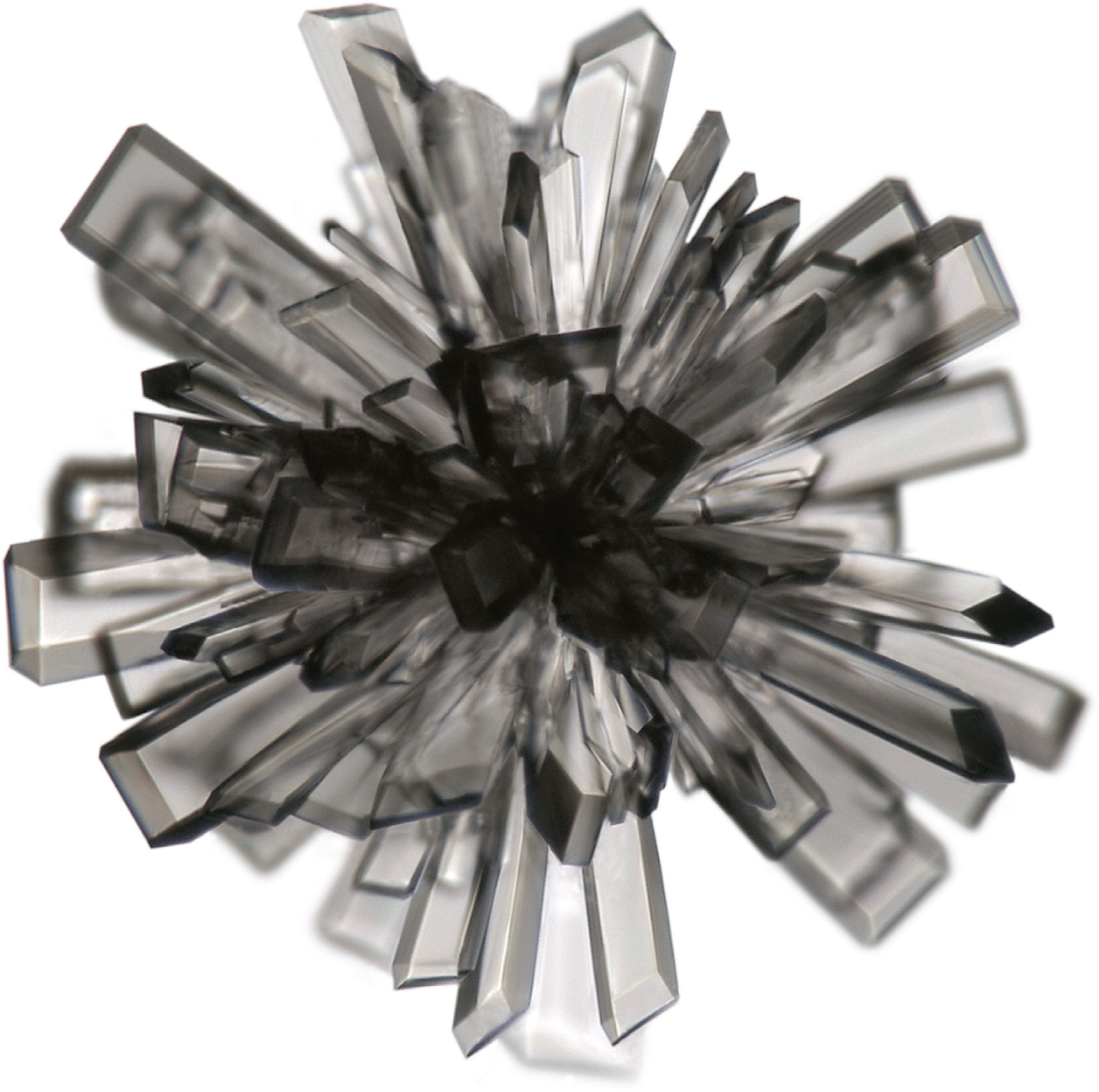
Microscopic view of Vitamin C crystal.
Although the importance of what became known as vitamin C had been known for many years (see here), it was only in the 1930s that the chemical structure of this substance, ascorbic acid, was worked out. This enabled the team that had determined the structure to develop a way to synthesize the vitamin – the first vitamin to be manufactured artificially.
The leader of the team was Norman Haworth, based at the University of Birmingham in England. In the late 1920s, Haworth was investigating the structure of carbohydrates. These are compounds built up from carbon and water (hence the name). The simplest carbohydrates are sugars, but the basic sugar units can be linked to make more complex molecules including things like starch, and the cellulose that forms the structure of plants. Each molecule of the kind of sugar found in grapes contains just 6 atoms of carbon, 6 of oxygen and 12 of hydrogen, but a single molecule of cellulose contains thousands of atoms. It was only in 1925 that the structures of the most basic sugars were determined (they are built around rings, like benzene; see here), opening the way for Haworth and others to work out the structure of more complex carbohydrates.

At the end of the 1920s, Albert Szent-Györgyi, a Hungarian initially working at Groningen, in the Netherlands, and afterwards based in Cambridge, isolated a compound which he called hexuronic acid from animal adrenal glands and the juice of plants including oranges and cabbages. He had been studying the function of the adrenal system and the way in which a failure of the system causes the fatal Addison’s disease. Victims become marked with a brown pigmentation which reminded him of the way some fruits, such as apples and bananas, turn brown when they decay. This brown colour is related to oxidation, so he decided to study plants that do not turn brown in this way, to find out what stops the oxidation. He found that these plants contain a powerful reducing agent which stops the development of the brown material. As he later remarked, ‘There was great excitement in my little basement room in Groningen, when I found that the adrenal cortex contained a similar reducing substance in relatively large quantities.’38 This was the hexuronic acid. Szent-Györgyi suspected that he had found vitamin C, but he lacked the facilities to test this speculation.
Szent-Györgyi went back to Hungary at the beginning of the 1930s, where he discovered that he could also obtain hexuronic acid from paprika, a common ingredient of Hungarian cooking. Experiments there showed unmistakably that hexuronic acid prevents scurvy (that is, it is an antiscorbutic). In April 1932 his team reported that they had been able to protect guinea pigs from scurvy by dosing them daily with one milligram of hexuronic acid. Also, the antiscorbutic activity of plant juices corresponded to the amount of hexuronic acid they contained. So, once Haworth had determined its structure, the name was changed to ascorbic acid.
Haworth was an obvious person to analyse the acid, because it has chemical similarities to acids derived from sugars. The basic chemical formula of ascorbic acid is C6H8O6, but the question was how those atoms are arranged in three dimensions. Szent-Györgyi visited Haworth to discuss his discoveries, and provided him with a sample of hexuronic acid. The Birmingham team tackled the puzzle from several directions.
Key evidence came from the still relatively new science of X-ray crystallography (see here), which showed that the molecules have an unusually flat, almost two-dimensional structure. By analysing the products produced when ascorbic acid reacted with other substances (for example, by oxidation), the Birmingham team were able to show that the molecule is made up of a short chain of carbon atoms attached to a five-sided ring, built around four carbon atoms and one oxygen atom, with other atoms attached at the corners. The oxidation process they used involved ozone, the form of oxygen in which there are three atoms per molecule, rather than the more common di-atomic form of oxygen.
In 1933, the year after he had identified the structure of vitamin C, Haworth was able to synthesize it from chemical raw materials. Another British chemist, Edmund Hirst, also synthesized the vitamin; but the key technique was developed by the Pole Tadeus Reichstein. In 1934 the rights to the Reichstein process were bought by the firm Hoffman-La Roche, who began marketing vitamin C under the name ‘Redoxon’.

Szent-Györgyi received the Nobel Prize in Physiology or Medicine in 1937, ‘for his discoveries in connection with the biological combustion processes, with special reference to vitamin C and the catalysis of fumaric acid’. The same year, Haworth received the Nobel Prize in Chemistry ‘for his investigations on carbohydrates and vitamin C’.